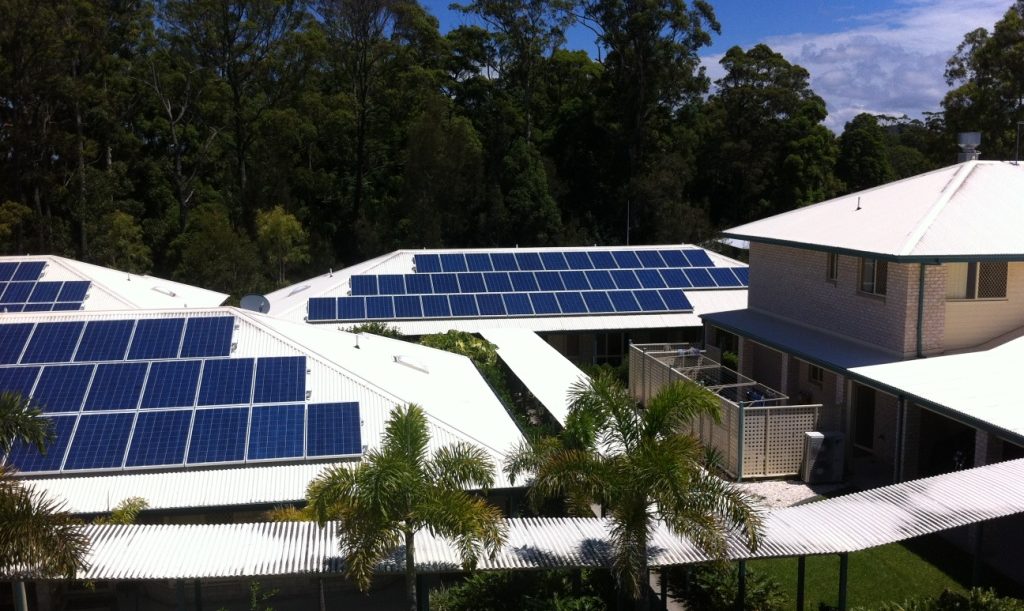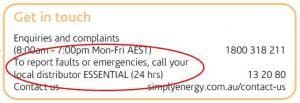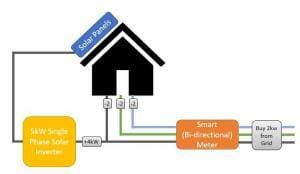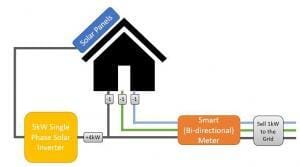Most residential premises in Australia have single-phase power, but if you have a large home or have specifically upgraded your power supply (for example to cover a hot-tub!) then you may have 3-phase power or even 2-phase power.
What is 3 phase power?
The more common single phase power has two wires (usually contained in one cable) connecting from the local transformer to your home – an active and a neutral. The power supplied through the active cable is 240V which is standard in Australia for all household appliances.
Three-phase power has 4 wires – 3 actives and a neutral. It can supply power at the standard 240V and at 415V for appliances that require greater power like some air conditioners. A three-phase connection effectively triples the power available as appliances can be split across each of the three phases.
Almost all commercial premises have a 3-phase connection.
How do I know if I have 3-phase power?
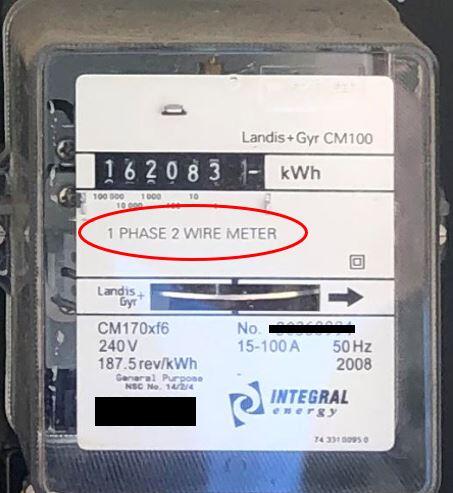 Often this information will be written on your electricity meter, which might be located near the main electrical switchboard for the house. If you can’t decipher the electrical jargon on the meter, then you could check one of these things:
Often this information will be written on your electricity meter, which might be located near the main electrical switchboard for the house. If you can’t decipher the electrical jargon on the meter, then you could check one of these things:
- Under the circuit break named “Main Switch” does your switchboard have one breaker or three breakers?
- Is there one or three wires leading from the electrical transformer on the street to your home?
- Call your Distributed Network Service Provider (DNSP). On your electricity bill there will be the company that sells you electricity and another company (your DNSP) who you can call in the case of power outages and emergencies. If you quote your Net Meter Identifier (NMI) from your bill they will be able to tell you what type of connection you have.
Do 3-phase homes need a 3-phase solar inverter?
The short answer is no, but there are some reasons why you might want to include a 3-phase inverter which usually only cost around $500 more.
If you have a single phase solar inverter it can only be connected to one phase of power. Typically the appliances in a 3 phase home will be split across the 3 phases. That means a single phase solar inverter can only directly tackle a third of household usage. However the smart bi-directional meter (that will get installed with you solar system) will offset any additional energy that is consumed across the other phases before buying any energy from the grid.
For example a 3 phase home has 2kW of usage of power across phases A, B and C and a typical single phase 5kW solar system is connected to phase A. If the 5kW solar system is outputting 4kW of power, then 2kW will be used by directly by phase A and the remaining 2kW will be offset by the smart meter against the other phases.
In another example, consider if there was only 1kW of usage of power across phases A, B and C and the 5kW solar system was outputting 4kW. In this scenario 3 kW would be offset against the 3 phase home’s usage and 1kW would be sold back to the grid.
There is a downside to installing a single-phase inverter on a three-phase home and it relates to the impact on voltage rise. In a single phase system the solar power is working much harder to be used. Without diving into the detail this means that the voltage will rise on the grey line in the above diagram, in some cases this may mean your solar inverter trips off. You should be notified via the monitoring software and can easily turn the system back on, but this can become an annoying problem.
High voltages are one of the main issues network operators (DNSPs) are facing across following the installation of almost 3 million household solar systems. Installing a 3-phase inverter will minimise your impact on the grid. As a result networks usually permit larger systems on three phase connections, which may be an added benefit if you are looking to install an inverter larger than 5kW in capacity.
Sometimes we see 15kW systems where the solar installer has installed one single phase 5kW inverter on each phase. In the energy system’s eyes this is still an inefficient solution as the solar power cannot directly optimise across phases. If phase B draws 10kW then a system with three single phase inverters must draw power from the grid, while a three phase inverter 15kW inverter could tackle the entire 10kW if there was no usage on phases A & C.
Pros and Cons of installing a 3-phase solar inverter
| Pros of a 3 phase solar inverter | Cons of a 3 phase solar inverter |
|
|
- Why a big battery could be cheaper than a small battery with the federal rebate? - 19 June, 2025
- Heat Pump Costs – Solar Choice Price Index - 1 June, 2025
- Solar Panel Costs: Solar Choice Price Index | July 2025 - 1 June, 2025
